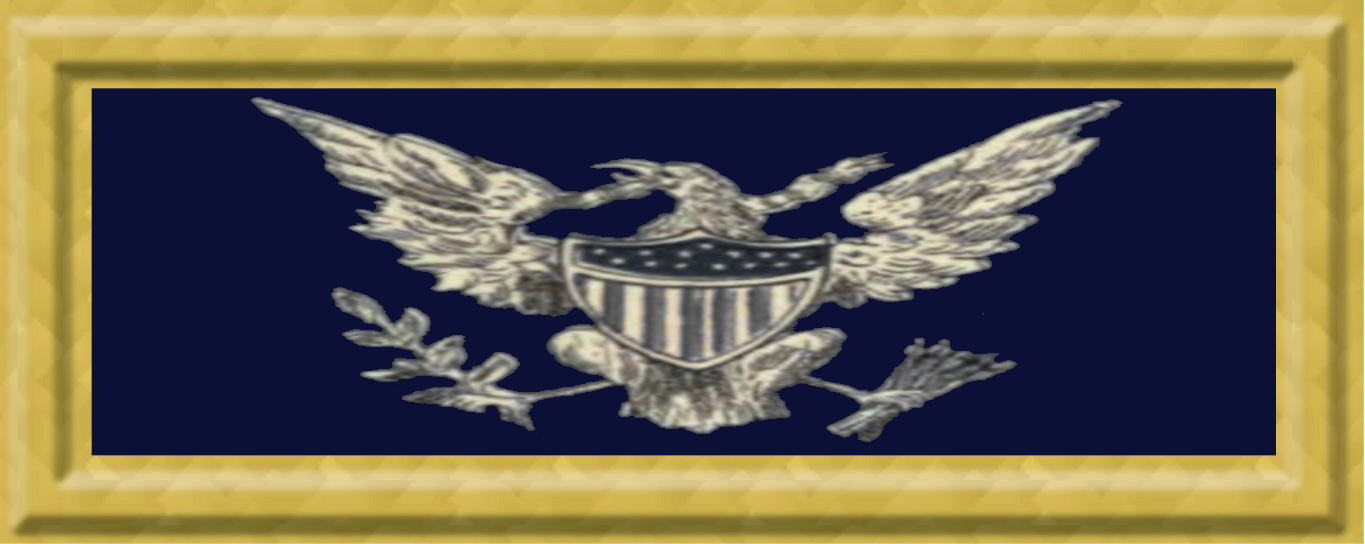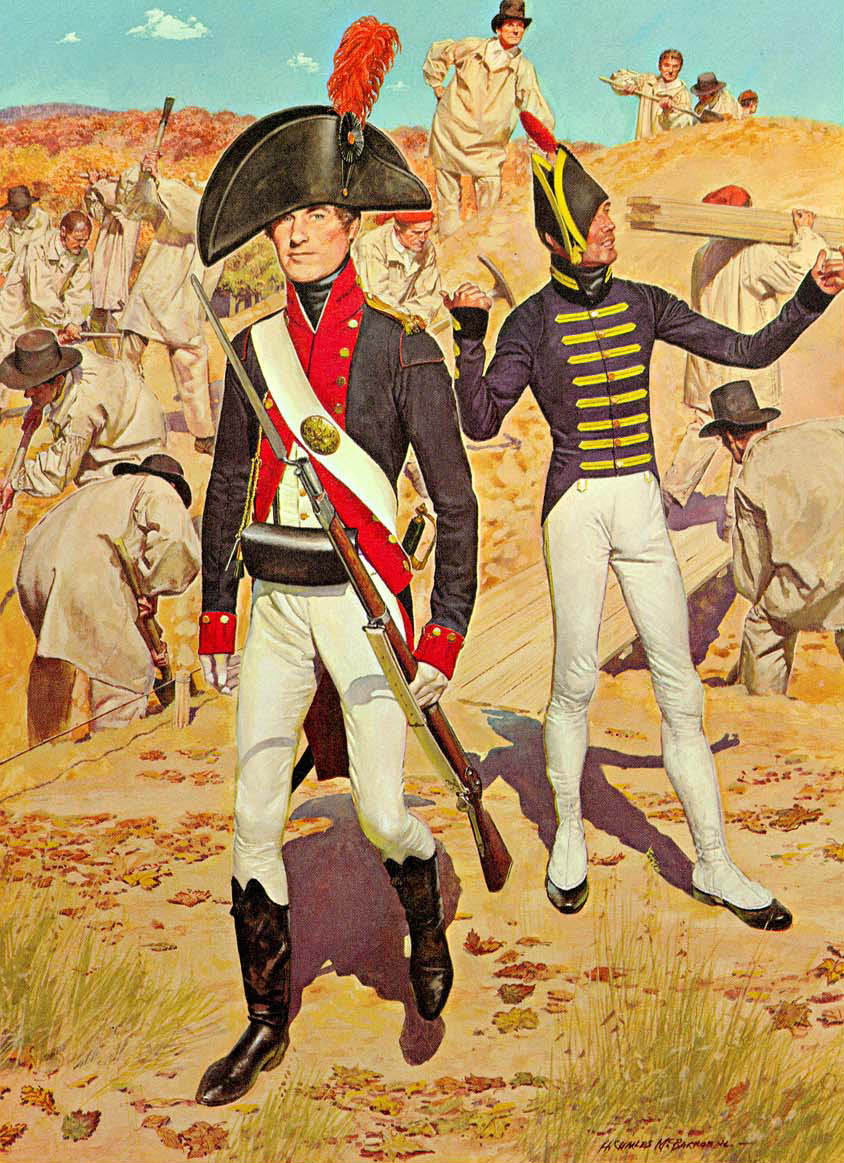|
United States Army Adjutant General's Corps
The Adjutant General's Corps, formerly the Adjutant General's Department, is a branch of the United States Army first established in 1775. This branch provides personnel service support by manning the force, providing human resources services, coordinating personnel support, Army band operations, and recruiting and retention. The objective of the Adjutant General Corps is to "maximize operational effectiveness of the total force by anticipating, manning, and sustaining military operations. HR support operations accomplish this by building, generating, and sustaining the force providing combatant commanders the required forces for missions and supporting leaders and Soldiers at all levels." History The Adjutant General's Corps dates back to the formation of the U.S. Army. Horatio Gates, a former British Army officer, is honored as the father of the Adjutant General's Corps. On 16 June 1775, the Continental Congress appointed him as the first Adjutant General to George Washington ... [...More Info...] [...Related Items...] OR: [Wikipedia] [Google] [Baidu] |
United States Army Branch Insignia
In the United States Army, soldiers wear insignia to denote membership in a particular area of military specialism and series of List of United States Army careers, functional areas. Army branch insignia is similar to the line officer and United States Navy staff corps, staff corps officer devices of the United States Navy, U.S. Navy as well as to the List of United States Navy ratings, Navy enlisted rating badges. The Medical, Nurse, Dental, Veterinary, Medical Service, Medical Specialist, Chaplains, and Judge Advocate General's Corps are considered "special branches", while the others are "basic branches". Army branch insignia is separate from Badges of the United States Army, Army qualification badges in that qualification badges require completion of a training course or school, whereas branch insignia is issued to a service member upon assignment to a particular area of the Army. History The first use of Army branch insignia was just prior to the American Civil War in 1859 f ... [...More Info...] [...Related Items...] OR: [Wikipedia] [Google] [Baidu] |
Alexander Macomb (general)
Alexander Macomb (; April 3, 1782 – June 25, 1841) was an American military officer who was the Commanding General of the United States Army from 1828 until his death in 1841. Macomb was the field commander at the Battle of Plattsburgh during the War of 1812 and, after the stunning victory, was lauded with praise and styled "The Hero of Plattsburgh" by some of the American press. He was promoted to Major General for his conduct, receiving both the Thanks of Congress and a Congressional Gold Medal. Early life Born at British-held Detroit in 1782, Macomb was the son of Alexander Macomb, a merchant and fur trader from upstate New York, and Mary Catherine Navarre, who was of ethnic French descent. He moved with his parents to New York City, where his father gained wealth as a land speculator, particularly in the millions of acres of New York land released by the federal government for sale after the Iroquois nations had been largely forced from the state into exile in Ontario f ... [...More Info...] [...Related Items...] OR: [Wikipedia] [Google] [Baidu] |
Major (United States)
In the United States Army, United States Marine Corps, Marine Corps, United States Air Force, Air Force and United States Space Force, Space Force, major is a field officer above the military rank, rank of Captain (United States O-3), captain and below the rank of Lieutenant colonel (United States), lieutenant colonel. It is equivalent to the rank of Lieutenant commander (United States), lieutenant commander in the United States Navy, Navy and United States Coast Guard, Coast Guard. Although lieutenant commanders are considered junior officers by their services, majors are senior officers. The U.S. uniformed services pay grades, pay grade for the rank of major is O-4. The insignia for the rank consists of a golden Oak#Culture, oak leaf, with slight stylized differences between the versions of the different services. Promotion to the rank of major is governed by the United States Department of Defense, Department of Defense policies derived from the Defense Officer Personnel Manag ... [...More Info...] [...Related Items...] OR: [Wikipedia] [Google] [Baidu] |
Union (American Civil War)
The Union was the central government of the United States during the American Civil War. Its civilian and military forces resisted the Confederate State of America, Confederacy's attempt to Secession in the United States, secede following the 1860 United States presidential election, election of Abraham Lincoln as president of the United States. Presidency of Abraham Lincoln, Lincoln's administration asserted the permanency of the federal government of the United States, federal government and the continuity of the Constitution of the United States, United States Constitution. Nineteenth-century Americans commonly used the term Union to mean either the federal government of the United States or the unity of the states within the Federalism in the United States, federal constitutional framework. The Union can also refer to the people or territory of the states that remained loyal to the national government during the war. The loyal states are also known as the North, although fou ... [...More Info...] [...Related Items...] OR: [Wikipedia] [Google] [Baidu] |
Confederacy (American Civil War)
The Confederate States of America (CSA), also known as the Confederate States (C.S.), the Confederacy, or Dixieland, was an unrecognized breakaway republic in the Southern United States from 1861 to 1865. It comprised eleven U.S. states that declared secession: South Carolina, Mississippi, Florida, Alabama, Georgia, Louisiana, Texas, Virginia, Arkansas, Tennessee, and North Carolina. These states fought against the United States during the American Civil War. With Abraham Lincoln's election as President of the United States in 1860, eleven southern states believed their slavery-dependent plantation economies were threatened, and began to secede from the United States. The Confederacy was formed on February 8, 1861, by South Carolina, Mississippi, Florida, Alabama, Georgia, Louisiana, and Texas. They adopted a new constitution establishing a confederation government of "sovereign and independent states". The federal government in Washington D.C. and states under its control ... [...More Info...] [...Related Items...] OR: [Wikipedia] [Google] [Baidu] |
Civil War (US)
The American Civil War (April 12, 1861May 26, 1865; also known by other names) was a civil war in the United States between the Union ("the North") and the Confederacy ("the South"), which was formed in 1861 by states that had seceded from the Union. The central conflict leading to war was a dispute over whether slavery should be permitted to expand into the western territories, leading to more slave states, or be prohibited from doing so, which many believed would place slavery on a course of ultimate extinction. Decades of controversy over slavery came to a head when Abraham Lincoln, who opposed slavery's expansion, won the 1860 presidential election. Seven Southern slave states responded to Lincoln's victory by seceding from the United States and forming the Confederacy. The Confederacy seized U.S. forts and other federal assets within their borders. The war began on April 12, 1861, when the Confederacy bombarded Fort Sumter in South Carolina. A wave of enthusias ... [...More Info...] [...Related Items...] OR: [Wikipedia] [Google] [Baidu] |
Lorenzo Thomas
Lorenzo Thomas (October 26, 1804 – March 2, 1875) was an American officer in the United States Army who was Adjutant General of the Army at the beginning of the American Civil War. After the war, he was appointed temporary Secretary of War by U.S. President Andrew Johnson, precipitating Johnson's impeachment. Early life Thomas was born in New Castle, Delaware. He graduated from the United States Military Academy in 1823, and was commissioned a second lieutenant in the 4th U.S. Infantry. He fought in the Seminole War in Florida and, during the Mexican–American War, he was the chief of staff to General William O. Butler. He received a brevet promotion to lieutenant colonel for Monterrey, which was made permanent in 1852. From 1853 to 1861, he served as chief of staff to the commanding general of the U.S. Army, Winfield Scott. Civil War Just before the start of the Civil War, Thomas was promoted to colonel and adjutant general of the U.S. Army on March 7, 1861. On A ... [...More Info...] [...Related Items...] OR: [Wikipedia] [Google] [Baidu] |
Samuel Cooper (general)
Samuel Cooper (June 12, 1798 – December 3, 1876) was an American career Army staff officer, serving during the Second Seminole War and the Mexican–American War. Although little-known today, Cooper was technically the highest-ranking general officer in the Confederate States Army throughout the American Civil War, even outranking Robert E. Lee. After the conflict, Cooper remained in Virginia as a farmer. Early life and career Samuel Cooper was born in New Hackensack, Dutchess County, New York. He was a son of Samuel Cooper and his wife Mary Horton.Wakelyn, p. 150. In 1813, he entered the United States Military Academy at age 15. He graduated 36th in a class of 40 two years later (the standard length of study in that period.) He was appointed a brevet second lieutenant in the U.S. Light Artillery on December 11, 1815. He was promoted to first lieutenant in 1821 and to captain in 1836.Eicher, p. 185. In 1827, Cooper married Sarah Maria Mason, becoming the brother-in-law of ... [...More Info...] [...Related Items...] OR: [Wikipedia] [Google] [Baidu] |
United States Military Academy
The United States Military Academy (USMA), commonly known as West Point, is a United States service academies, United States service academy in West Point, New York that educates cadets for service as Officer_(armed_forces)#United_States, commissioned officers in the United States Army. The academy was founded in 1802, and it is the oldest of the five United States service academies, American service academies. The Army has occupied the site since establishing a fort there in 1780 during the American Revolutionary War, as it sits on strategic high ground overlooking the Hudson River north of New York City. West Point's academic program grants the Bachelor of Science degree with a curriculum that grades cadets' performance upon a broad academic program, military leadership performance, and mandatory participation in competitive athletics. Candidates for admission must apply directly to the academy and receive a nomination, usually from a member of United States Congress, Congr ... [...More Info...] [...Related Items...] OR: [Wikipedia] [Google] [Baidu] |
War Department (US)
The United States Department of War, also called the War Department (and occasionally War Office in the early years), was the United States Cabinet department originally responsible for the operation and maintenance of the United States Army, also bearing responsibility for naval affairs until the establishment of the Navy Department in 1798, and for most land-based air forces until the creation of the Department of the Air Force on September 18, 1947. The secretary of war, a civilian with such responsibilities as finance and purchases and a minor role in directing military affairs, headed the War Department throughout its existence. The War Department existed for 158 years, from August 7, 1789, to September 18, 1947, when it split into the Department of the Army and the Department of the Air Force under the National Security Act of 1947, joining the United States Department of the Navy, Department of the Navy to form the National Military Establishment (NME). In 1949, the NME ... [...More Info...] [...Related Items...] OR: [Wikipedia] [Google] [Baidu] |
Roger Jones (Adjutant General)
Roger Jones (1789–July 15, 1852) was an American military officer in the United States Marine Corps and United States Army who was the longest-serving Adjutant General of the U.S. Army in history, holding the position from 1825 to 1852. Family Jones was a central figure in the Jones military family with relatives holding commissions in the Revolutionary War, War of 1812, Mexican War, Civil War, World War I, and World War II. His brother Thomas ap Catesby Jones won distinction in the US Navy. Of his thirteen children many went on to serve in the military in both Union and Confederate forces. His son Catesby ap Roger Jones was the commander of the ironclad CSS ''Virginia'' at Hampton Roads on the second day of battle with the USS ''Monitor''. His son Charles Lucian Jones served in the Confederate navy on the ironclad ''Tennessee''. His son, also named Roger Jones, served as Inspector General of the U.S. Army from 1888 to 1889. Career Jones was appointed a second li ... [...More Info...] [...Related Items...] OR: [Wikipedia] [Google] [Baidu] |
Brigadier General (United States)
In the United States Armed Forces, a brigadier general is a one-star general officer in the United States Army, Marine Corps, Air Force, and Space Force. A brigadier general ranks above a colonel and below a Major general (United States), major general. The U.S. uniformed services pay grades, pay grade of brigadier general is O-7. It is equivalent to the rank of Rear admiral (United States)#Rear admiral (lower half), rear admiral (lower half) in the other United States Uniformed services of the United States, uniformed services which use Naval officer ranks, naval ranks. It is abbreviated as BG in the Army, BGen in the Marine Corps, and Brig Gen in the Air Force and Space Force. The Civil Air Patrol also uses this grade for its National Vice Commander and some past National commanders. History The rank of brigadier general has existed in the U.S. military since the inception of the Continental Army in June 1775. To prevent mistakes in recognizing officers, a general ord ... [...More Info...] [...Related Items...] OR: [Wikipedia] [Google] [Baidu] |





